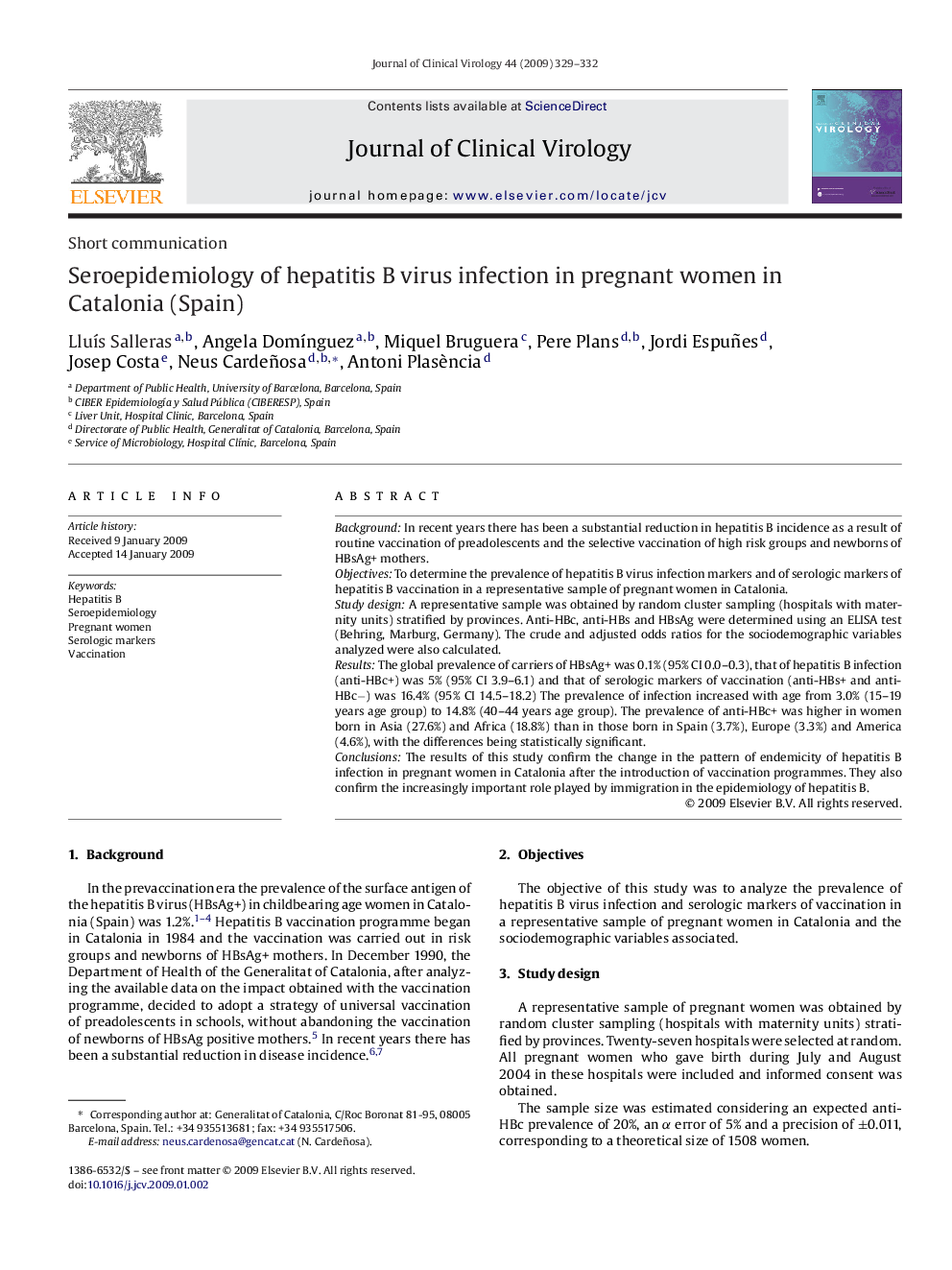| Article ID | Journal | Published Year | Pages | File Type |
|---|---|---|---|---|
| 3370051 | Journal of Clinical Virology | 2009 | 4 Pages |
BackgroundIn recent years there has been a substantial reduction in hepatitis B incidence as a result of routine vaccination of preadolescents and the selective vaccination of high risk groups and newborns of HBsAg+ mothers.ObjectivesTo determine the prevalence of hepatitis B virus infection markers and of serologic markers of hepatitis B vaccination in a representative sample of pregnant women in Catalonia.Study designA representative sample was obtained by random cluster sampling (hospitals with maternity units) stratified by provinces. Anti-HBc, anti-HBs and HBsAg were determined using an ELISA test (Behring, Marburg, Germany). The crude and adjusted odds ratios for the sociodemographic variables analyzed were also calculated.ResultsThe global prevalence of carriers of HBsAg+ was 0.1% (95% CI 0.0–0.3), that of hepatitis B infection (anti-HBc+) was 5% (95% CI 3.9–6.1) and that of serologic markers of vaccination (anti-HBs+ and anti-HBc−) was 16.4% (95% CI 14.5–18.2) The prevalence of infection increased with age from 3.0% (15–19 years age group) to 14.8% (40–44 years age group). The prevalence of anti-HBc+ was higher in women born in Asia (27.6%) and Africa (18.8%) than in those born in Spain (3.7%), Europe (3.3%) and America (4.6%), with the differences being statistically significant.ConclusionsThe results of this study confirm the change in the pattern of endemicity of hepatitis B infection in pregnant women in Catalonia after the introduction of vaccination programmes. They also confirm the increasingly important role played by immigration in the epidemiology of hepatitis B.
